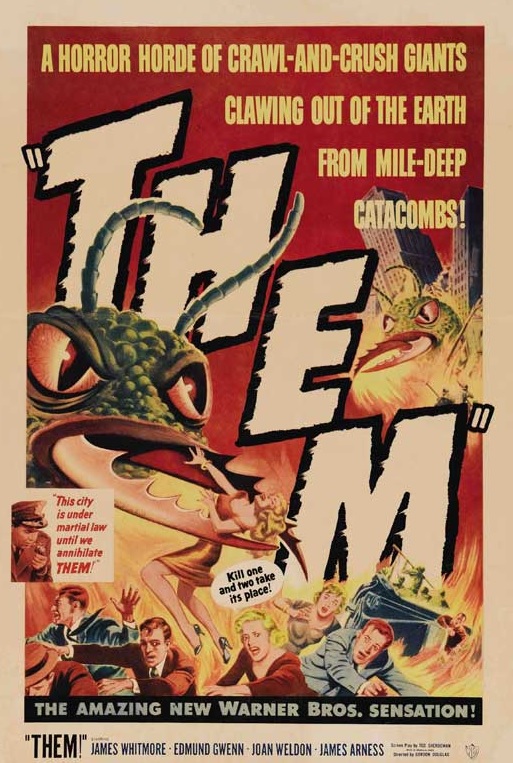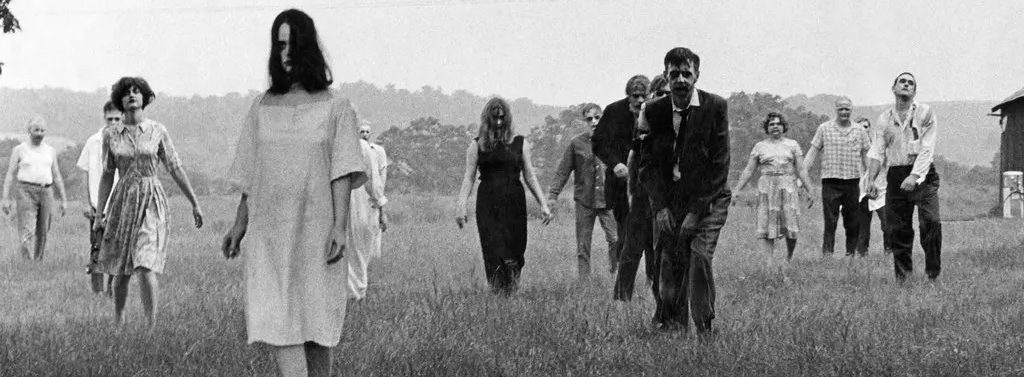The opening and the last part of Richard Dyer’s “White,” which you read for today, suggests that Night of the Living Dead draws attention not just to Ben’s blackness but to the whiteness of all the characters around him. The movie does this, in Dyer’s thinking, even if the characters themselves never mention race. Pick a scene (other than the shooting at the end) where you see the movie putting forth an idea of whiteness and blackness that’s particularly striking.
Author Archives: Michael Newbury
Night of the Living Dead
What, if anything, did you find scary or disturbing about the zombies in Night of the Living Dead? What was a particularly frightening or unsettling moment? If you didn’t find any moment got to you this way, why do you think the film failed? Pick a moment that you thought was supposed to be upsetting that fell flat for you.
Peeping Tom and the Gaze
In a frequent meta-commentary on film-making and film-watching, Peeping Tom is preoccupied with the way that the move camera sees and captures women. Pick one scene in the film that shows a woman in front of the camera or watching a film. What is one thing that scene might tell us about the depiction of women on screen? It might be useful to reference some part of Laura Mulvey’s argument in the essay assigned for class.
PEEPING TOM Title_01_01.mp4 (If you want to see a scene again, use this link to the movie. You’ll have to be logged in to Midd’s network for it to work.)
1950s Monster Movies
In the reading for today, Peter Biskind highlights the vast array of horror/Science Fiction movies that poured out of studios in the 1950s. Some of these were alien invasion movies with weak ties to horror film history, but others, suggesting links to Frankenstein, centered on monsters brought into being by scientific experiments. As we’ve discussed, monsters carry a range of potential meanings in their otherness. What is at least one way that Biskind offers us to think about monsters, specifically in the 1950s? Below are posters from two monster movies from the decade. What kinds of threats and what sort of appropriate responses to the monster do one or both posters suggest?


Creature from the Black Lagoon
Do you see signs within Creature From the Black Lagoon that it was aiming for a particular audience/demographic? Most movies do have market segments at least partially in mind. Who do you think would be the audience for this movie—adults, children, teenagers, men, women, or any other group? Maybe (or maybe not) horror fans, in particular? Do you think Creature would appeal to the same audience that either Rebecca or Dr. Jekyll and Mr. Hyde did in their time? Point to a particular scene or moment that informs your understanding of the likely audience for Creature?
Rebecca
How would you describe the change in the second Mrs. DeWinter (we never hear her name) over the course of Rebecca? What’s she like at Monte Carlo and at Manderley before and after she learns Maxim’s secret? Do you think there’s any single shot in the film that emblematizes her as a character at a particular point in time? You don’t have to answer all of these questions, but do consider the second Mrs DeWinter’s evolution.
Jekyll and Hyde–Book
How does Stevenson’s novel imagine London? If Moreau hints at the horrors that might arise in “savage” locations, what is the nature of the metropolis itself? Over and over the novel describes distinctly urban scenes and interactions. What is a specific moment in the book that reveals the potential for horror of life in London?
Doctor Jekyll and Mr. Hyde–movie
At the end of last class, we talked briefly about the ways that The Island of Lost Souls confronts its hero with alternatives to heterosexual monogamy. Parker plans to get married to a “decent” woman, but is kept apart from his fiancé for almost all of the movie, in a horror-island realm of alternative sexual possibilities—the implied sadism of Moreau and the animalistic attractions and desires of Lota, for example. Explain in a paragraph or two how one scene from Doctor Jekyll and Mr. Hyde emphasizes, or at least hints at, the potential “horrors” of sexuality that Henry has to navigate in London.
Island of Lost Souls
The Island of Lost Souls begins in fog and frequently obstructs viewers from clearly seeing places characters. Shadows often appear conspicuously on characters or to obscure action in darkness. Briefly describe a moment where you see one or more of these strategies in action and the impact of that moment on you as a viewer.
This course examines the form and meaning of horror over the last 125 years, primarily in England and the United States. How have effects of fright, terror, or awe been achieved and why do audiences find such effects attractive? Our purpose will be to understand the generic structures of horror and their evolution in tandem with broader cultural changes.
